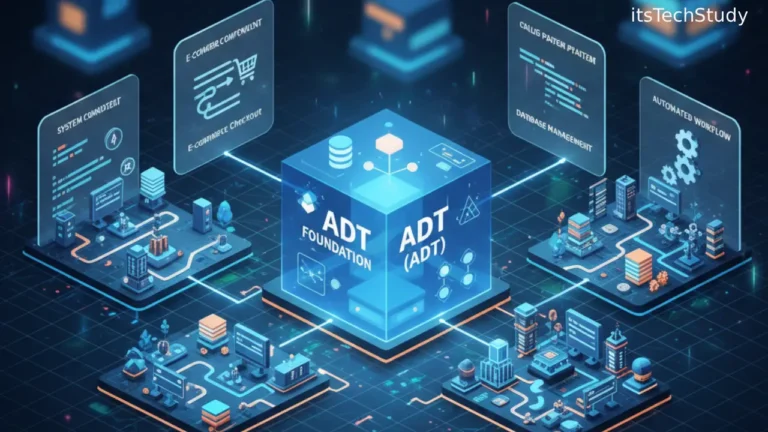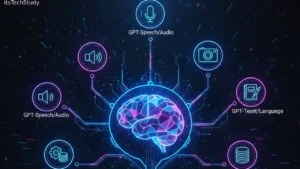Introduction: The Evolving Face of Broadcasting
Ten years back, it used to mean switching on your TV set at a certain time to watch a live cricket match. Now, it could be Ind vs Aus Women, Nepal vs UAE, Oman vs Qatar, and millions of viewers watch the matches live on their mobile phones-anytime, anywhere. The pattern of consumption has totally shifted, all because of huge leaps in broadcasting technology.
From 4K and high-definition (HD) streaming to AI-based content delivery, the broadcasting industry has transformed into a complex ecosystem involving hardware, software, and cloud infrastructure. The convergence of artificial intelligence (AI), fifth-generation (5G) connectivity, and real-time data analytics has revolutionized the way content creators create, deliver, and monetize their broadcasts.
But what actually goes on behind the scenes? How do the technology enable millions of people to watch live games like IndW vs Au-W or Netherlands vs Finland at the same time without delays or interruptions? Let’s explore the amazing technology innovations behind the new media landscape.
H2: The Evolution of Broadcasting Technology
H3: From Radio Waves to Digital Streams
Broadcasting started with radio frequencies, progressed to analog television, and subsequently digitized with digital broadcasting in the early 2000s. Digitization brought about better-quality audio and video signals, minimized interference, and a more efficient use of the spectrum.
Currently, Internet Protocol (IP)-based broadcasting dominates. Rather than relying on conventional airwaves, content is streamed via the internet-allowing for on-demand streaming, interactive services, and global accessibility.
H3: Satellites and Fiber Optics’ Role
Satellite broadcasting was the way of the future once upon a time. But fiber optic technology has emerged as the foundation for today’s content delivery. It provides:
- Lower latency
- Increased bandwidth
- Consistent signal quality
Most broadcasters use satellite uplinks for international reach combined with fiber backbones for real-time, high-definition streaming these days.
H2: Top Technologies Driving Today’s Broadcasting
H3: Artificial Intelligence and Machine Learning
Machine learning and AI are transforming the broadcasting sector. They automate processes, identify viewer behavior, and even create real-time highlights.
For instance:
- AI-powered cameras automatically follow the ball in a cricket game such as Ind vs Aus Women without any manual intervention.
- Machine learning algorithms identifies critical moments-such as wickets, boundaries, or milestones-to make instant highlight reels.
- AI-based analytics enable broadcasters to present customized viewing experiences based on user patterns.
Pros of AI in Broadcasting:
- Reduces repetitive tasks
- Increases viewers’ engagement
- Decreases production expenditures
Cons:
- Has high initial setup expenses
- Needs large data training
- Can restrain human imagination if used excessively
H3: The Emergence of 5G in Live Broadcasting
5G technology has transformed live streaming. It allows for ultra-high speeds, low latency, and real-time mobile device transmission.
Envision broadcasting a live Oman vs Qatar game from a stadium through 5G-capable cameras—no cables, no lag, just real-time connectivity. Broadcasters are now able to feed 8K resolution content directly to millions of devices without lag.
Advantages of 5G Broadcasting:
- Delivery of content in real-time
- Improved quality of mobile streaming
- Accommodates immersive technologies such as AR/VR
H3: Cloud-Based Broadcasting Solutions
Cloud computing has become the pillar of digital media creation. Broadcasts in the past needed enormous physical infrastructure-control rooms, edit bays, and transmission servers. Today, a significant part of all this takes place in the cloud.
Cloud broadcasting enables teams on different continents to work together in real time. Editors, producers, and directors are able to collaborate on the same project at the same time, reducing time and cost of operation.
Popular Cloud Broadcasting Platforms:
- AWS Elemental MediaLive
- Microsoft Azure Media Services
- Google Cloud Media Solutions
H3: The Role of Augmented and Virtual Reality (AR/VR)
AR and VR technologies are developing engaging experiences for viewers. Sports broadcasters employ AR overlays to show real-time stats, heatmaps of players, and graphical replays.
For example, while watching a Nepal vs UAE game, viewers are able to view a virtual ball trajectory or fielding analysis straight on their screens. This brings depth and interaction, particularly for digital viewers.
AR/VR Use Cases:
- Virtual tours of stadiums
- Interactive replays
- Immersive newsrooms and studios
H2: Traditional vs Modern Broadcasting Technologies: A Comparison
| Feature | Traditional Broadcasting | Modern Digital Broadcasting |
|---|
| Signal Type | Analog / RF Waves | Digital / IP-based |
| Content Delivery | TV & Radio Networks | Internet Streaming & OTT |
| Viewer Interaction | Minimal | Real-time (Comments, Chats) |
| Video Quality | Standard Definition (SD) | HD, 4K, 8K |
| Infrastructure Cost | High (physical equipment) | Moderate (cloud-based) |
| Accessibility | Localized | Global |
| Personalization | None | AI-driven |
This transition has created opportunities for content providers, sports networks, and individual streamers alike, democratizing the media space.
H2: Broadcasting and Live Sports – A Technological Spectacle
Live sports continue to be the most-viewed content globally. Broadcasts such as Ind vs Aus Women, SA vs Pak, or Netherlands vs Finland gather huge digital viewership. The equipment used for broadcasting these matches is a wonder of contemporary engineering.
H3: High-Resolution Cameras and Drones
High-frame-rate cameras, 4K lenses, and drone filming record every detail-be it the movement of a fast bowler or a dive by a fielder. 360-degree cameras give stories more depth, presenting multiple perspectives to viewers at home.
H3: Real-Time Data Integration
Data analytics systems such as Hawk-Eye, SportVU, and Statcast provide live performance statistics. These are then assimilated into broadcasts for real-time commentary-speed, distance, reaction time, and so on.
H3: Multi-Platform Streaming
Today’s broadcasters don’t only stream to television-today’s broadcasters stream to YouTube, Facebook Live, mobile apps, and OTT platforms at the same time. This way, fans never miss a moment of action, regardless of where they are.
H2: Benefits and Challenges of Modern Broadcasting
H3: Benefits
- Global Reach: Internet broadcasting reaches global audiences immediately.
- Higher Quality: 4K and 8K resolutions provide cinematic levels of detail.
- Interactive Experiences: Fans can interact, comment, and share in real time.
- Cost Efficiency: Cloud-based workflows minimize the cost of physical infrastructure.
- Scalability: Simply accommodate millions of simultaneous viewers.
H3: Challenges
- Bandwidth Limitations: Strong internet connectivity is required for high-quality streaming.
- Cybersecurity Risks: Hazards such as data breaches and unauthorized streams still exist.
- Licensing Issues: Global content rights continue to be a challenge.
- Technical Complexity: Needs qualified professionals to handle systems.
H2: The Future of Broadcasting Technology
The future of broadcasting will probably be characterized by AI automation, edge computing, and immersive experiences. With the advent of 6G and quantum networking, real-time holographic broadcasting can become a reality in the near future.
Future Trends to Watch:
- AI-Powered Storytelling: Smart editing and automated highlight generation.
- Personalized Feeds: Content streams customized for individual users.
- Sustainability: Green, energy-efficient broadcast systems.
- Blockchain Integration: Digital rights management and anti-piracy solutions.
- Metaverse Broadcasting: Interactive, 3D live experiences for global audiences.
Conclusion: Broadcasting Beyond Boundaries
Broadcasting technology evolution has revolutionized the way we consume media—from the conventional radio waves to interactive digital streams. Whether viewing IndW vs Au-W, Nepal vs UAE, or SA vs Pak, the audience today gets high-definition, real-time content on various platforms.
As technologies like AI, 5G, and cloud computing continue to advance, broadcasting will become even more dynamic, interactive, and intelligent. The future promises a media world without borders-where every story, match, and moment can reach anyone, anywhere, instantly.
FAQs About Broadcasting Technology
Q1: What is broadcasting technology?
Ans: Broadcasting technology refers to the systems and methods used to transmit audio and video content to a wide audience through radio, television, or the internet.
Q2: How has technology changed broadcasting?
Ans: Advancements in digital, cloud, and AI technologies have shifted broadcasting from traditional TV to internet-based platforms, allowing real-time, personalized content delivery.
Q3: What role does AI play in modern broadcasting?
Ans: AI drives camera motion, tag creation, and highlight generation. It further examines viewer behavior to make recommendations personal.
Q4: Why is 5G crucial for live streaming?
Ans: 5G delivers low-latency, high-speed connectivity, which is critical for uninterrupted live streaming of sports, events, and news.
Q5: What are the most significant challenges in broadcasting currently?
Ans: Handling large volumes of data, protecting against cyber threats, and delivering hassle-free user experiences across devices are still significant challenges.
Q6: How do broadcasters manage global matches such as Ind vs Aus Women or SA vs Pak?
Ans: They employ global satellite networks, fiber-optic backbones, and cloud platforms to provide synchronized, live broadcasts across nations.












No Comments Yet
Be the first to share your thoughts.
Leave a Comment